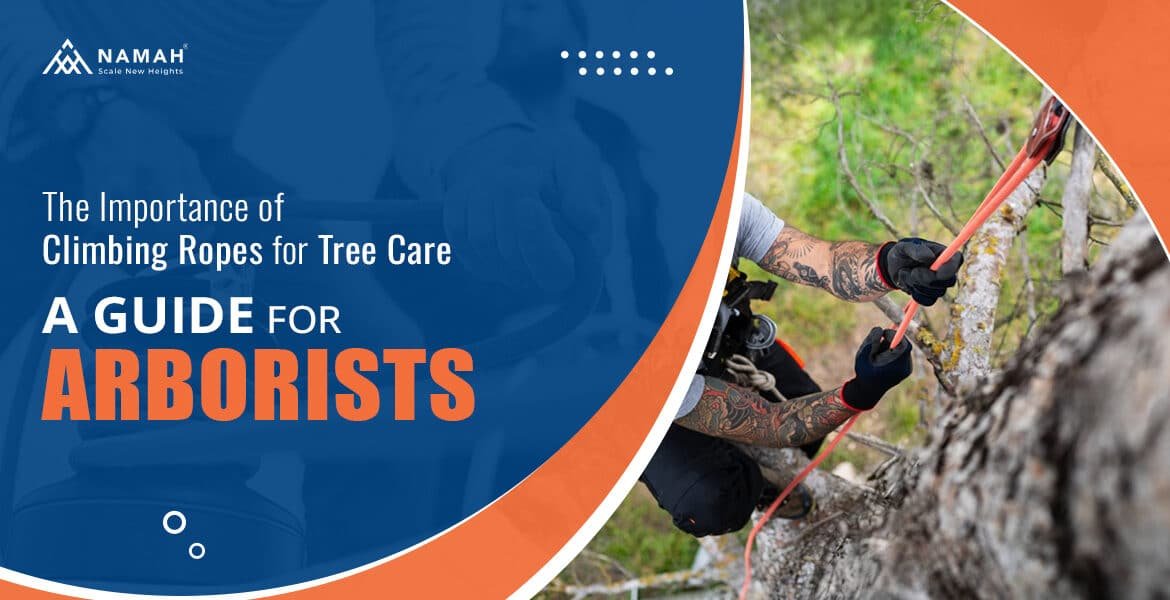When you look up at a towering tree and see an arborist confidently working at dizzying heights, it’s easy to admire the bravery and skill involved. But behind that confidence lies a deep reliance on equipment, especially one unsung hero: the climbing rope.
For arborists, climbing ropes aren’t just tools, they’re lifelines. This guide dives into why climbing ropes are crucial in tree care, how to choose the best climbing ropes, and what to consider in terms of fall protection equipment, safety slings, and even innovations borrowed from indoor rock climbing gyms.
Why Climbing Ropes Matter in Tree Care
In the tree care industry, safety is not optional it’s the foundation. Arborists operate in a high-risk environment, often suspended tens of feet above ground while navigating uneven terrain, sharp tools, and unpredictable weather. Without the right climbing ropes for tree care, the job becomes not just difficult but dangerous.
A rope for climbing in this context must offer:
- High tensile strength
- Flexibility for movement
- Low stretch for stability
- Resistance to abrasion, UV exposure, and water
Unlike ropes used in sailing or hauling, arborist ropes are designed to be part of an integrated system that includes safety harnesses for working at heights, fall protection equipment, and webbing slings for heavy loads.
The Anatomy of a Great Climbing Rope
What makes the best climbing ropes stand out?
- Construction: Most arborist ropes are made using heavy-duty braided cord technology, providing both durability and flexibility. A durable braided rope resists wear and tear, especially from bark friction.
- Diameter & Weight: Arborists usually prefer ropes between 11–13 mm in diameter. Anything thinner might cut into gloves or be hard to grip, while anything thicker becomes cumbersome to handle.
- Material Strength: Look for high strength cords made from polyester or nylon blends. These materials offer an ideal balance of stretch and load-bearing capacity.
- Safety Ratings: Always check for compliance with ANSI Z133 and CE standards. Certified gear is non-negotiable when working in hazardous conditions.
Climbing Ropes in Action: A Day in the Life of an Arborist
Imagine it’s a humid morning in Delhi. You’re an arborist responding to a call about a diseased Gulmohar tree posing a risk to pedestrians.
You pull out your gear:
- A certified arborist tree climbing rope
- Your working at heights harness
- Industrial safety slings
- A helmet, gloves, and a chainsaw
The climb begins. You’re relying on your climbing rope to keep you anchored while you navigate branches. As you move higher, you clip into your safety harness working at height, adjust your balance with a webbing sling, and begin the careful pruning process. Your life literally hangs in the balance.
This scenario is real for hundreds of arborists every day. And while skill is essential, equipment makes all the difference.
Comparing Arborist Ropes vs. Rock Climbing Ropes
It’s tempting to assume that all ropes for climbing are the same, but that couldn’t be further from the truth.
- Rock climbing ropes often have dynamic stretch, allowing climbers to absorb falls. This makes sense when you’re in a rock climbing gym or scaling cliffs.
- Arborist climbing ropes, on the other hand, are mostly static. They prioritize control and minimize bounce, which is vital when handling chainsaws midair.
That said, the indoor rock climbing world has inspired innovations in comfort, lightweight harnesses, and gear attachment systems. Many arborists cross-train in indoor rock climbing Delhi gyms to stay agile and physically prepared.
Don’t Forget the Safety Webbing Slings
Ropes are just one part of the puzzle. Safety webbing slings are equally important in tree care.
Used to secure tools, redirect loads, and anchor climbers, webbing slings for heavy loads help distribute weight and reduce the stress on one single point. This is especially useful when lifting cut branches or maneuvering equipment mid-air.
Certified webbing slings are made from polyester or Dyneema, both of which offer excellent strength-to-weight ratios. Always match the sling to the rope’s capacity and ensure compatibility with your fall protection setup.
Must-Have Fall Protection Equipment
Your rope may hold your weight, but your fall protection equipment is what keeps you from hitting the ground if something goes wrong.
Here’s a basic checklist:
- Working at heights harness with chest and leg support
- Rope grab device for added control
- Double lanyards for backup connection
- Edge protectors to prevent rope cuts
- Helmet with chin strap (a must when working under trees)
Many professionals also carry industrial safety slings and ascenders/descenders for efficient movement. Regular inspection of this equipment is non-negotiable, fraying or fading materials can lead to fatal accidents.
How to Choose the Right Climbing Rope for Tree Care
- Start with the Tree Type: Softwood trees require different rope strategies than dense hardwoods. Bark texture affects friction.
- Evaluate Your Movement: Do you need flexibility to move around the canopy, or will you be stationary while cutting?
- Factor in Weather Conditions: Ropes behave differently in monsoons versus dry heat. UV-resistant ropes fare better in tropical regions like India.
- Check Compatibility: Ensure your working at heights harness, fall protection equipment, and webbing slings are compatible with your chosen rope.
- Buy from Reputed Sellers: Avoid buying ropes from general stores or marketplaces without clear certification labels. Safety gear is not an area to compromise.
Final Word: It’s Not Just a Rope It’s Your Safety Line
Tree care is one of the most rewarding professions but it’s also one of the most dangerous. Choosing the best climbing ropes, pairing them with reliable fall protection equipment, and incorporating safety webbing slings can mean the difference between a successful day at work and a life-altering accident.
Whether you’re a veteran arborist or just starting out, remember this: your rope isn’t just a tool it’s your trust, your stability, and your survival line.
Stay grounded by staying safe.
Explore Our Full Range of Climbing Solutions
Looking for high strength cord, industrial safety slings, or durable braided rope for your arborist toolkit?
Namah offers certified products engineered for real-world conditions trusted by arborists, climbers, and professionals working at height.
👉 Check out Namah’s catalog and find the perfect climbing ropes for tree care built for safety, performance, and peace of mind.



